Description
Depending on availability, we always choose the best of all yellow and purple passionfruit.
Sometimes the purple passionfruits are sweeter, sometimes the yellow ones are. Unfortunately, this can never really be assessed beforehand. It often happens that we only find one of the two varieties. In that case, you will either only receive yellow or only purple passionfruits. The difference really isn’t that big. Incidentally, the farmers make no distinction between the varieties.
Background
The yellow and purple passionfruit both belong to the genus of passion flowers (Passiflora). With this edible species, these two varieties are particularly well known and economically interesting:
The purple passionfruit and the yellow passionfruit.
Origin and cultivation
These fruits originally come from Brazil, Paraguay and the north of Argentina, but are now cultivated worldwide in the tropics and subtropics (including Sri Lanka).
The passion fruit is more tolerable to the cold and is also grown in higher altitudes, while the yellow passionfruit is more resistant and is therefore partly used as a base for the purple passionfruit in plantations.
The shoots of the climbing plant become up to 10m long and the beautiful passion flower reaches a diameter of up to 8cm. The purple passionfruit is self-fertilizing, while the yellow passionfruit is dependent on cross-pollination.
Taste and ripeness
The purple passionfruit is a bit sour and aromatic, yet mild and sweet with an exciting exotic and fruity note, while the yellow passionfruit can be a little more acidic. Because of its higher acidity, the yellow passionfruit is therefore more suitable for juice production.
A friend of mine who consistently practiced the instincto rawfood diet found that chewing the kernels develops an additional sweetness with the purple passionfruit 😉
The fruit is a berry. The leathery and tough skin is brown-violet in the spherical or oval fruit and becomes wrinkled when ripe. The oval fruits of the passion fruit are slightly larger. Inside the fruit are numerous edible seeds, each surrounded by a juicy, jelly-like, yellow-orange pulp and lined with a soft, cottony fabric that can be eaten and rounds off the taste a little.
It is best to cut the fruit in half with a sharp knife and then simply spoon it out (or sip) and scrape it out as completely as possible!
Storage tip
Whole ripe fruit can easily be kept in the fridge for up to a week.
Maturation process
The fruits first turn completely yellow or purple and then slowly begin to shrink. The longer you let them ripen, the more shriveled and sweet they become.
Ingredients and use
Purple passionfruit and yellow passionfruit juice contains vitamin C and pro-vitamin A, niacin and riboflavin. A number of volatile esters are particularly responsible for the aromatic taste.
An oil is extracted from the seeds of the Purple / yellow passionfruit, which is used in cosmetic products (sun protection, massage oils), among other things. The main ingredients are linoleic acid, oleic acid and palmitic acid.
Photo: purple passion fruit, yellow passion fruit (ready to eat)







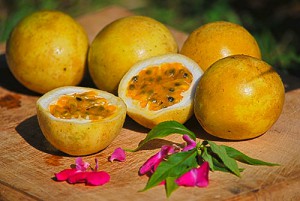
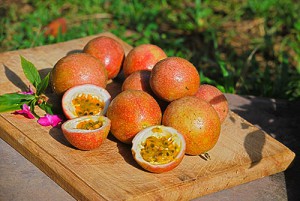
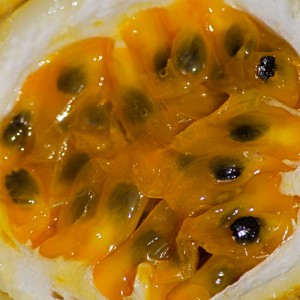
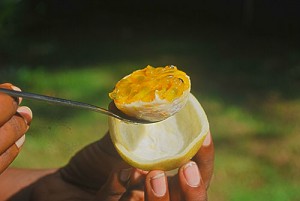
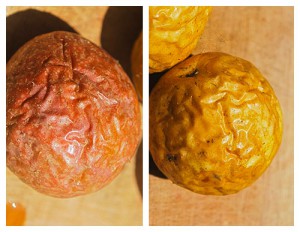





Reviews
There are no reviews yet.